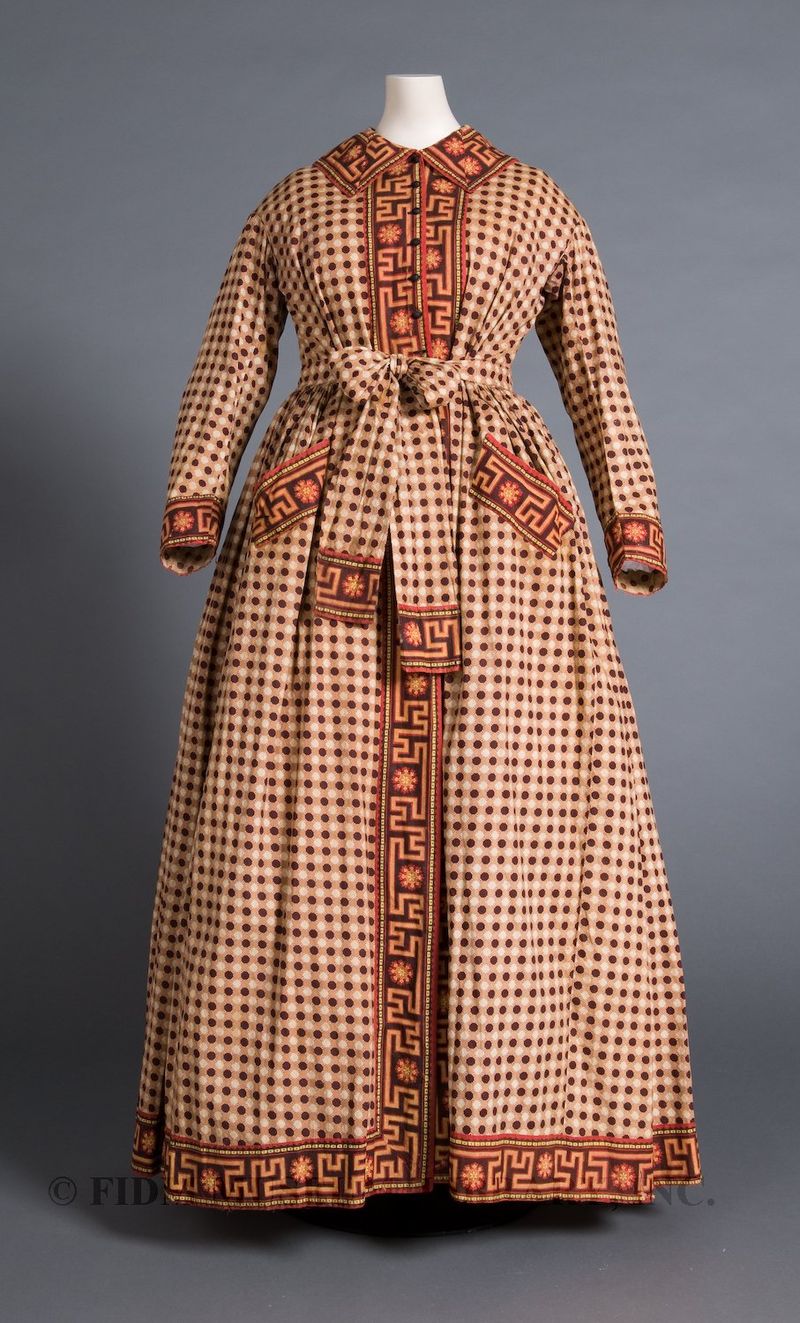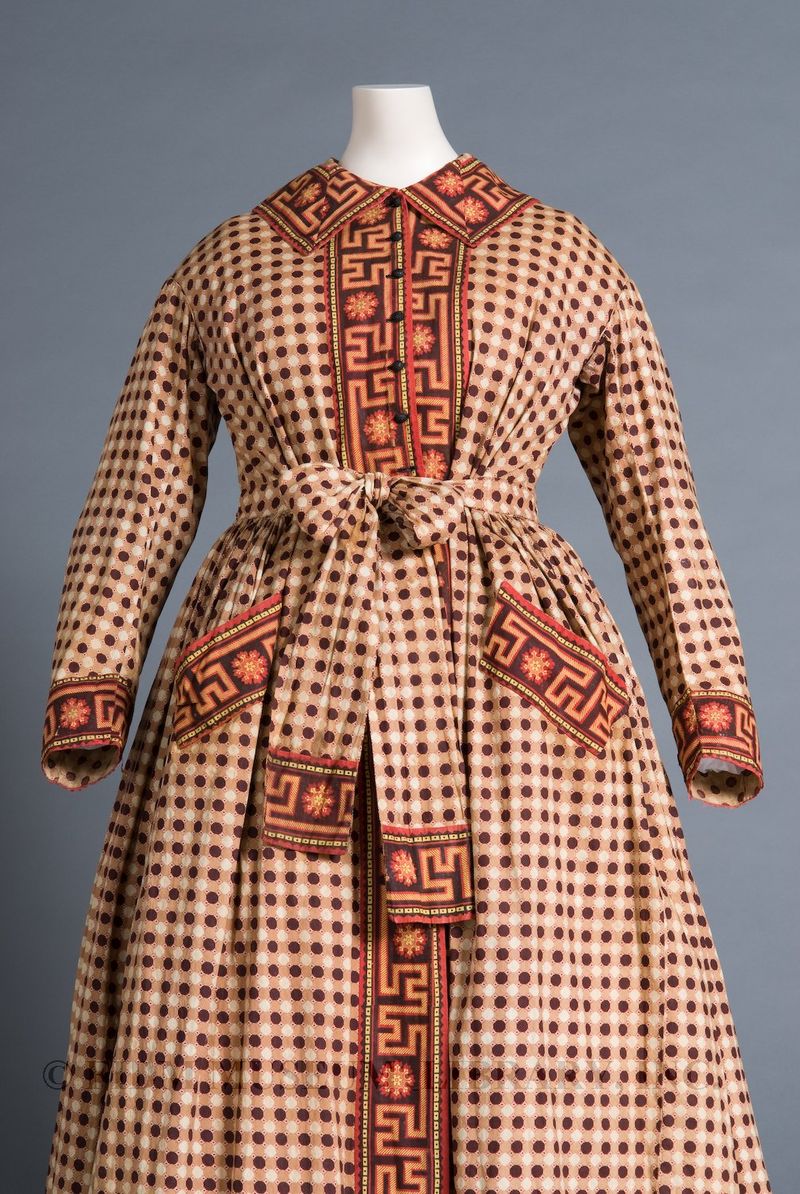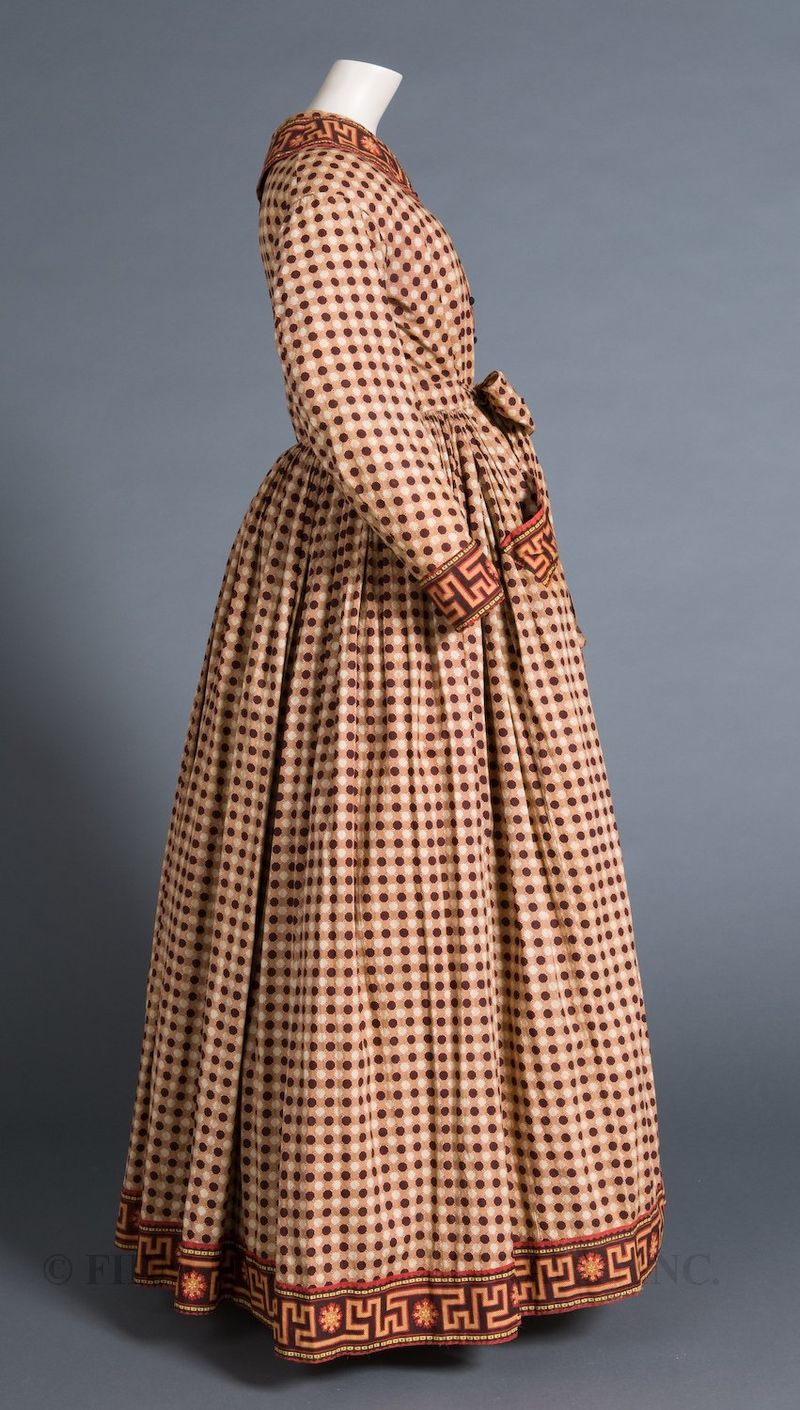Cotton wrapper, 1863-65
A careful reading of Victorian fashion periodicals and etiquette manuals reveals that each moment and every activity required a specific outfit. Though many woman surely overlapped their morning and afternoon dresses due to economic circumstances or other factors, the ideal wardrobe contained a dizzying array of dress types. Throughout the Victorian era, displaying an understanding of appropriate dress (including accessories) for any given occasion was a way of demonstrating good taste, thus ensuring social standing. The Ladies' Book of Etiquette (1872), describes appropriate dress for the following activities or events: receiving visitors, visiting others, travel, walking, going to market, shopping, visiting new brides, mourning, and going out in stormy weather. Each category of dress is distinguished by type of fabric, presence or absence of trim and physical suitability for the named activity, i.e. an evening gown would prohibit walking. Not comprehending and adhering to these sartorial rules was the epitome of bad taste.
 Wrapper
Wrapper
Cotton
1863-65
Museum purchase
2003.5.54
The cotton wrapper pictured here was worn at home, in the morning. According to The Ladies' Book of Etiquette, "The most suitable dress for breakfast is a wrapper made to fit the figure loosely."1 This same manual suggested pairing a wrapper with cloth slippers, or black leather slippers in summer and leaving the head uncovered, with smooth and tidy hair. Relatively unstructured, the wrapper was probably worn over a loosely laced corset. Considered an informal garment, a wrapper was suitable for wear only around close family members. Only invalids and new mothers could wear the garment when receiving expected visitors. If an urgent, unexpected visitor arrived early in the morning, a "wrapper made with handsome trimming, open over a pretty white skirt, may be worn with propriety."2 The underskirt would be easily seen because many wrappers were constructed with fasteners only from collar to waist; below the waist, the wrapper was meant to fall open, revealing the underskirt.
 2003.4.54 Note the lack of fasteners below the waist
2003.4.54 Note the lack of fasteners below the waist
In general, wrappers followed the details of fashionable dress but were made from washable and/or durable fabrics. Printed cottons were popular for summer, while wool was favored in winter. Our lightweight cotton wrapper has a waistline and sleeves characteristic of 1863-65. Wrappers from the 1890s often feature the relatively slim silhouette and puffed shoulder seen in the period, while 1850s wrappers often feature pagoda sleeves. One design element that seems consistent on wrappers of the 1840s-1860s is a strong vertical decoration at or near the center front closure. The abstracted greek key trim seen on this wrapper is actually a separate strip of fabric and probably pre-dates the dot-patterned fabric used in the body of the wrapper. Based on the pattern of the trim, we think it dates from the 1830s. It may have been salvaged from an earlier garment, or pulled from a fabric stash. The trim was created through a process that involved dyeing, roller printing and stenciling.
1 Hartley, Florence. The Ladies' Book of Etiquette and Manual of Politeness. New York: Lee & Shepard Publishers, 1872: 27.
2 Ibid
